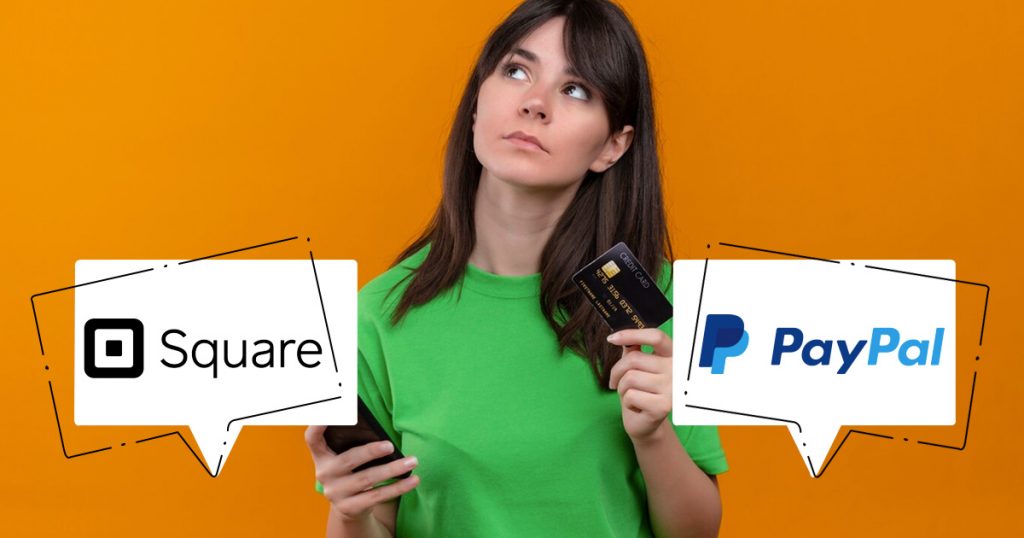When choosing a payment solution, Square and PayPal often stand out as top contenders. Both platforms have strengths and weaknesses, making them suitable for different business needs. To explore Square and. PayPal, you need to look at fees, security, compatibility, and usability. By the end, you’ll clearly understand which is the right fit for your business.
Getting to Know Square and PayPal
Square is a payment processing platform designed for businesses of all sizes. It offers tools for both in-person and online payments, including card readers, point-of-sale (POS) systems, and e-commerce integration. Square’s simplicity and versatility make it popular among small businesses.
While PayPal is a global payment platform known for its widespread acceptance and reliability, it also supports online payments, peer-to-peer transfers, and invoicing, making it a favorite for e-commerce businesses and freelancers.
Square vs PayPal: Key Comparisons
When deciding between Square and PayPal, it’s important to consider their unique features and how they align with your business needs. Here are the key comparisons between Square and PayPal to help you choose the right platform.
PayPal and Square: Plans and Fees
Square is ideal for businesses needing both in-person and online payment options. PayPal is best for online businesses, especially those needing international payments and easy eCommerce integrations.
PayPal:
To accept payments through PayPal, you need a business account. Setting up both a personal and business account is free. PayPal offers five main plans, with various fees based on your needs. Here’s an overview:
- PayPal Checkout: For payments online (website, e-commerce, apps) – 3.49% + $0.49
- PayPal Virtual Terminal: For phone or mail payments – 3.09% + $0.49
- Regular PayPal: For payments via the PayPal app or social media – 2.99%
- PayPal Invoicing and Subscriptions: For invoicing and recurring billing – 2.99% + $0.49
- PayPal Zettle: For brick-and-mortar or mobile POS sales – 2.29% + $0.09 (card present), 3.49% + $0.09 (keyed-in cards)
PayPal doesn’t have monthly fees, and you can accept various payment methods like credit cards, Venmo, Apple Pay, Google Pay, and more.
Square:
Square’s basic plan is free but has extra fees for add-ons. Here’s a summary of Square’s plans:
- Free Plan: $0 monthly, with 2.6% + $0.10 for in-person payments, 2.9% + $0.30 for online, and 3.5% + $0.15 for manually entered payments. Features include a website builder, social media selling, and fraud control.
- Plus Plan: $29/month (billed annually), offering expanded site customization, PayPal acceptance, and a free domain.
- Premium Plan: $79/month (billed annually), with lower processing rates, real-time shipping rates, and enhanced customer service.
Square also has add-ons for email marketing, payroll, text message marketing, and a loyalty program.
Both PayPal and Square are good options depending on your needs. For brick-and-mortar stores, PayPal’s rates are often better. However, Square is more affordable for e-commerce businesses and those with high transaction volumes.
Payment Processing
Take note that Square doesn’t accept PayPal. They use their own payment system. If you want to accept PayPal, you’ll need to use PayPal separately. Here what sets them apart:
PayPal offers multiple ways to get paid and supports payments from Venmo users. Payments go to your PayPal account, and transfers to your bank account are free with standard transfers (1-3 business days). PayPal does charge a $20 fee for chargebacks.
Square also supports various payment methods, including Apple Pay and ACH. Your revenue is held in a Square Checking account, and transfers to another bank account can be done within one business day or instantly for a fee.
Square is better for processing payments quickly and is less likely to freeze or hold funds.
Is Square Safer than PayPal?
Both PayPal and Square offer strong security with encryption and fraud protection.
PayPal uses encryption, machine learning, and seller protection for disputes. It’s also PCI-compliant and secures card details.
Square provides end-to-end encryption, PCI compliance, and fraud detection using machine learning. There are no chargeback fees with Square.
Both PayPal and Square are highly secure, so this category is a tie.
Software
PayPal’s Zettle is a cloud-based POS with features like sales reports, inventory management, and invoice creation. You can also use the PayPal Business app for transaction data and customer management.
Square also offers a robust POS system, with options for online and in-person sales. Its software includes CRM features and integrates with third-party services.
This is a tie. Square is slightly better for restaurants, but PayPal’s invoicing feature is ideal for freelancers.
Hardware
PayPal offers Zettle card readers and an all-in-one POS terminal. The Zettle card reader accepts various payment types, including NFC mobile payments and contactless wallets.
Square provides card readers and POS systems with similar capabilities.
Which Platform Should You Choose?
Choosing between Square and PayPal depends on your business type and priorities:
Square is ideal for:
- Brick-and-mortar stores.
- Businesses needing advanced POS systems and analytics.
- Hybrid operations with both in-person and online sales.
PayPal is better for:
- E-commerce businesses.
- Freelancers or individuals managing online payments.
- Businesses requiring a globally recognized platform.
Choosing the Right Payment Solution for Your Business
The choice between Square and PayPal depends on your business needs. Square works best for businesses that need both in-person and online payment solutions, like physical stores or those with hybrid operations. PayPal is better for businesses focused on e-commerce or those that need easy international payments. The key is choosing the platform that matches your business model and future growth.
